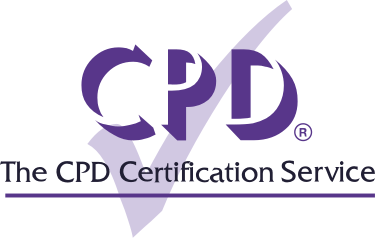In recent years, agile leadership has become a valuable means for management success given the increasingly dynamic and fast changing nature of modern industries. This may represent a gradual shift in mindset for how leaders guide their teams - through embracing change, fostering collaboration, and empowering individuals.
The following CPD article explains the increasing importance of agile leadership, including key principles and benefits of agile leadership for organisations. It will also highlight how a commitment to Continuing Professional Development (CPD) courses can help to develop the skills and understanding to successfully implement agile leadership.
What is agile leadership?
Agile leadership can be described as a nimble and adaptive approach to management - emphasising flexibility, collaboration and continuous improvement. It necessitates the empowering of teams, putting customer needs at the forefront, and cultivating a responsive and innovative culture. Agile leaders navigate challenges by continuingly embracing change, focusing on specific step-by-step progress, and promoting transparent communication.
What are some key principles and examples of agile leadership?
An agile style of leadership has become valued across industry sectors in order to meet ever-changing market dynamics and technological advancements. However, as a relatively new management approach, it can sometimes be difficult to know when and how to truly be agile. The following identifies some core principles of agile leadership and useful examples to follow.
Adaptability: Embrace change and remain adaptable to evolving circumstances. Example: Quickly adjusting project priorities based on shifting market demands.
Empowerment: Empower team members, allowing them to make decisions and take ownership. Example: Allowing a development team to choose the most suitable approach for a specific project.
Collaboration: Cultivate a strong culture of open communication and collaboration. Example: Regular cross-functional team meetings to share updates, challenges, and insights.
Customer-Centricity: Prioritise understanding and meeting customer needs. Example: Conducting regular customer feedback sessions to inform product development.
Iterative Progress: Emphasise incremental and iterative progress over rigid, long-term planning. Example: Releasing minimum viable products (MVPs) to gather feedback and improve continuously.
Continuous
Improvement: Encourage a mindset of continuous
learning and improvement. Example: Conducting regular retrospectives to
identify areas for enhancement and implementing changes accordingly.
Outcome-Focused: Prioritise delivering valuable outcomes over adhering strictly to predefined plans. Example: Adjusting project goals based on feedback to ensure the end result meets customer needs.
How can agile leadership benefit your organisation?
Adopting an agile leadership approach can offer significant benefits to organisations. These are some effective ways in which agile leadership creates a positive impact:
Increased Adaptability and Innovation:
Agile leaders are adept at navigating and embracing change. This allows organisations to respond swiftly to market shifts, emerging trends, and unexpected challenges. By fostering a culture of experimentation and openness to new ideas, agile leadership stimulates innovation within teams, leading to the development of creative solutions and products.
Enhanced Collaboration and Customer Focus:
The use of promoting cross-functional collaboration, breaking down silos and encouraging a collective approach results in improved communication, shared knowledge, and more effective teamwork. Agile methodologies prioritise understanding and meeting customer needs. This ensures that products and services align closely with customer expectations, enhancing satisfaction and loyalty.
Efficient Resource Utilisation and Faster Time-to-Market:
Agile leadership emphasises incremental progress, allowing for the efficient allocation of resources. Projects are broken down into smaller, manageable tasks, leading to quicker delivery and the ability to adapt based on ongoing feedback. The coupling of efficient communication and collaboration facilitates faster delivery of products and services to the market, providing a competitive edge.
Empowered Teams and Continuous Improvement:
Agile leadership empowers team members by providing autonomy and encouraging decision-making at various levels. This empowerment leads to increased job satisfaction, motivation, and a sense of ownership among employees. Agile leaders instil a mind-set of continuous improvement. Regular retrospectives and feedback loops enable teams to reflect on their processes, identify areas for enhancement, and make iterative adjustments.
Resilience and Improved Employee Retention:
Resilience means equipping organisations with tools and attitudes to navigate potential uncertainties and disruptions effectively. The ability of agile leadership to adapt quickly and maintain focus on priorities is crucial in times of crisis. The collaborative and empowering nature of agile leadership contributes to higher levels of job satisfaction and employee retention. Teams are more likely to stay engaged and committed to an organisation when they feel their contributions are valued.














